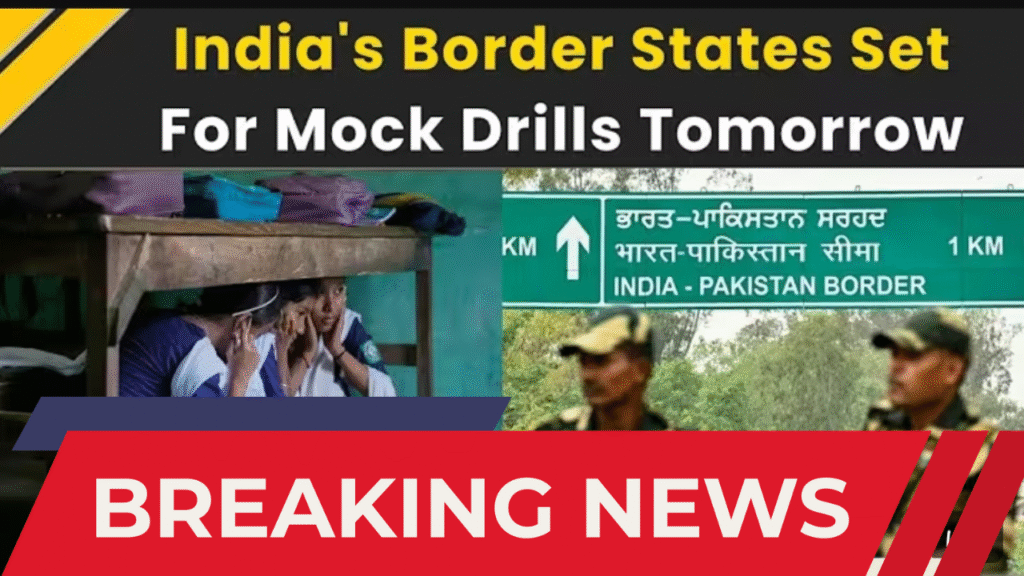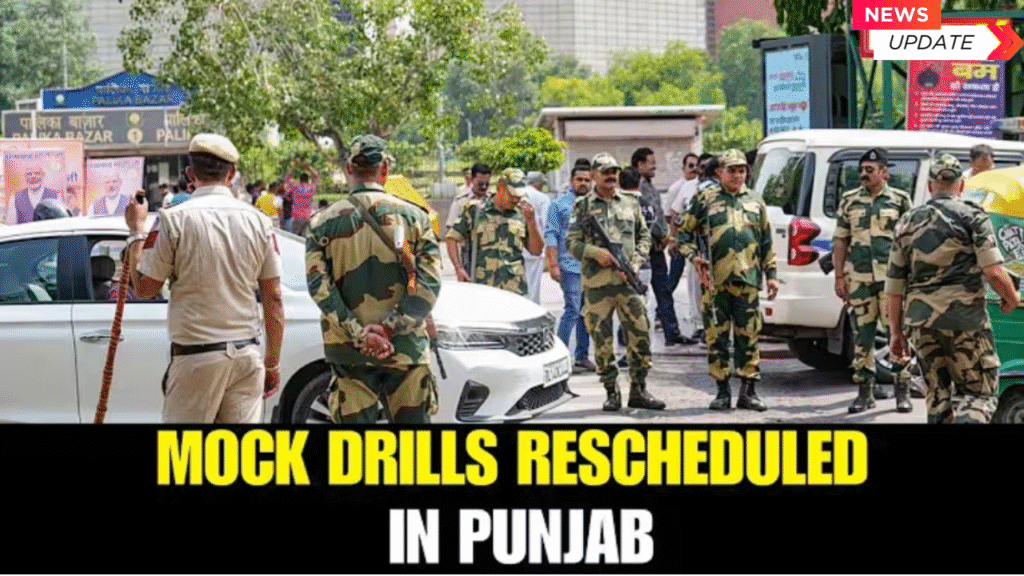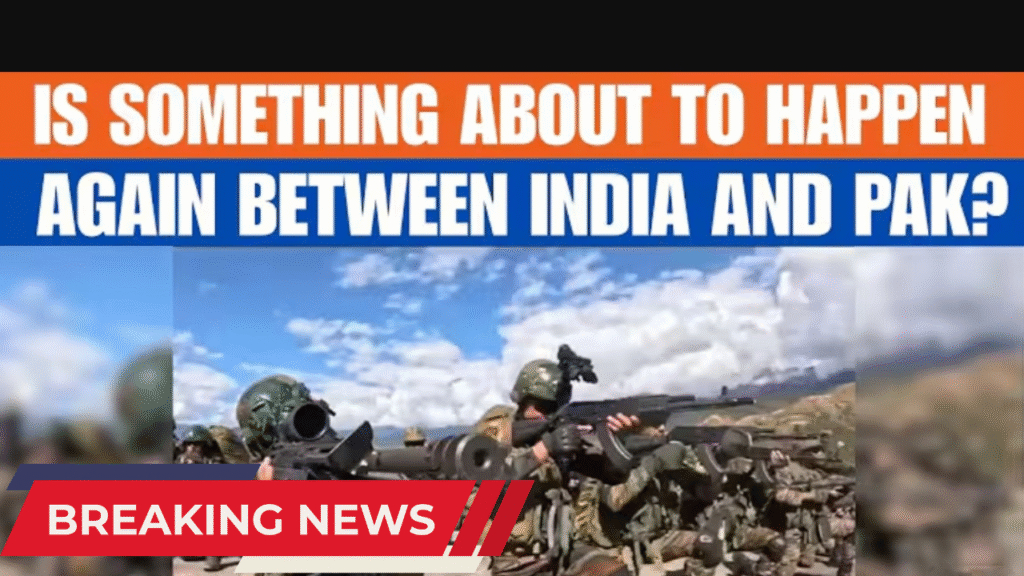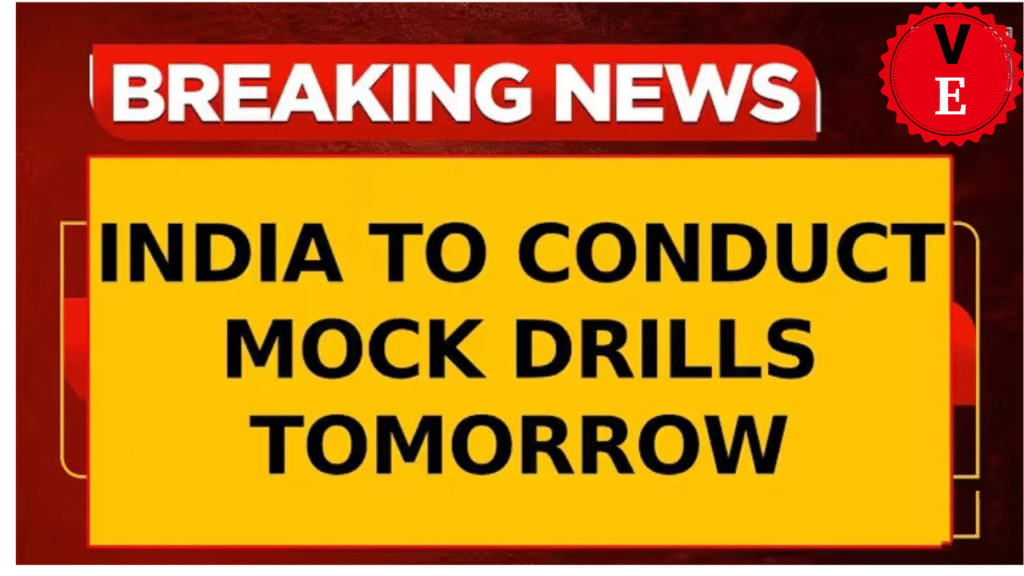The stakes are always high in South Asia, especially between India and Pakistan mock drill, two neighbors with nuclear weapons. The underlying strain has never really gone away, even during times of peace and diplomacy. Additionally, the necessity of readiness, both military and civilian, has taken center stage in such a volatile climate. Mock exercises are essential in preventing countries from being caught off guard in emergency situations.
In recent months, both India and Pakistan have increased the frequency and complexity of their simulated drills as the geopolitical narrative has heated up owing to cross-border skirmishes, increased rhetoric, and military posturing. The importance of these drills cannot be emphasized, even if the general public frequently ignores them.

Mock drills: what are they?
A simulated emergency response exercise is called a mock drill. It can be carried out for a number of situations, including man-made threats like chemical spills, terrorist attacks, and even military invasions, as well as natural calamities like earthquakes and floods. The effectiveness and coordination of emergency services, governmental organizations, the military, and civilians are put to the test during these exercises.
Mock drills are becoming more and more focused on civil defense procedures, war readiness, and nuclear strike simulations in the context of India and Pakistan. They have evolved into urgent, real-time practice runs for scenarios that are all too likely in the current environment, rather than merely being bureaucratic checkboxes.
Current Instances: Practice Makes Perfect
In India:
In recent years, India has held a number of simulated exercises around its borders. “Operation Sudarshan Prahar,” which was carried out by the Indian Army’s Southern Command, was one such well-known exercise. The main objectives of this large-scale exercise were real-time coordination with the Air Force,
Unit mobility, and battlefield tactics. Mock drills that concentrate on evacuation protocols, chemical warfare, and terror strikes have also been held in cities like Delhi, Mumbai, and Jammu. To simulate attacks on metro stations, hospitals, and schools, the National Disaster Response Force (NDRF) regularly works with local organizations.

In Pakistan:
Pakistan has also increased its readiness. There have been reports of nuclear attack mock drills, especially in places like Lahore and Islamabad. These exercises are being organized by the Civil Defense Department and the National Disaster Management Authority (NDMA). Underground bunkers are being examined, evacuation procedures are being tested, and schools are being involved.
One noteworthy exercise was a full-scale evacuation of a Rawalpindi business district, during which residents were led to designated safety zones while emergency sirens blared. Given the tensions in the real world, this practice was unsettling but essential.
Why Now?
These drills are scheduled for a reason. A mixture of ceasefire violations, political pronouncements that inflame public sentiment on both sides, and cross-border terrorism have heightened tensions between India and Pakistan. As tensions between India and Pakistan rise, mock drills act as a signal and a deterrent in such a delicate setting. These exercises show military preparedness from a strategic perspective. However, they also have a psychological purpose, reminding people that the government is ready while also bringing home to them the harsh reality of living in an area where a conflict may break out in a matter of hours.

Civilian Engagement: Beyond a Military Concern
The growing participation of civilians in recent simulated drills is remarkable. Nuclear preparedness drills are being held in schools. Mass casualty management is being practiced in hospitals. Pamphlets on how to react in the event of a missile attack or air raid are being distributed by local governments. This pattern represents a change in emphasis: readiness is no longer just a military concern. We all share responsibility for it. The theory is that civilian panic may be the largest obstacle in the case of a true emergency. By fostering a sense of control and familiarity with protocols, mock drills help lessen that anxiety.

Towards the Future: The New Normal?
Ideally, mock drills would not be necessary for war preparation. However, the situation is far from ideal. Mock drills will continue to be a part of national policy and public life as long as India and Pakistan are engaged in a strategic rivalry. Whether it’s students learning how to “duck and cover,” or soldiers rehearsing tactical moves on the border, these drills serve as a sobering reminder of the geopolitical reality in which we live. However, they are also a ray of hope—the optimism that we will be prepared in the event of the worst.
In summary,In a wake-up call rather than a panic button
As India-Pakistan ties are at stake, mock drills are about confronting reality head-on rather than inciting fear. They make it very evident that, despite our desire for peace, we must be ready for war. And our resilience is found in that readiness.